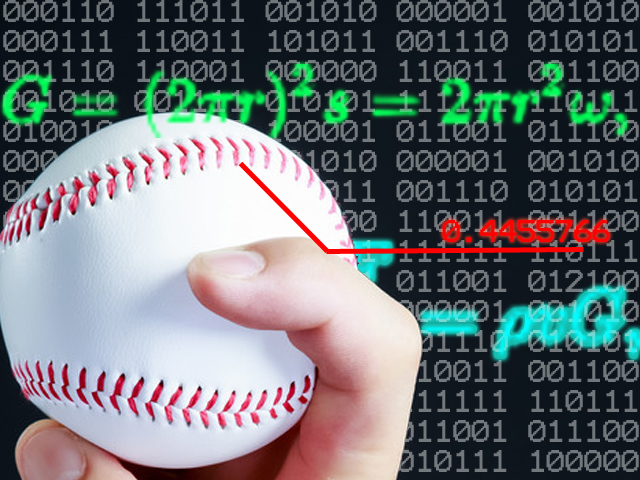
Why have a supercomputer if you can’t use it to figure out how a two-seamer works?
“It’s all in the wrist,” is a sports cliché that’s been around forever and describes how technical finesse is often more important that raw strength. Particularly in ball games where putting the right spin can make all the difference.
However, research conducted by Professor Takayuki Aoki and his team at the Tokyo Institute of Technology discovered that it might not “all” be in the wrist after all. Sometimes it’s also in the seams.
First, let’s fly through the basics of the Magnus effect. This physical phenomenon occurs when a spinning object is moving through a fluid – most often air (yes, air is a fluid, though it’s not a liquid). The object pushes against the air, which in turn pushes back against the object and an upward force, or “lift” not unlike that used by aircraft, is generated.
▼ In this diagram the green object is moving towards the left and backspinning, which creates an upward Magnus force
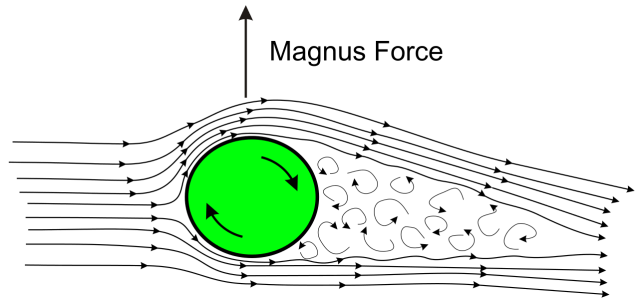
Even without understanding the raw physics behind it, the phenomenon is easy enough to observe in any number of sports from table tennis to golf. The three factors that determine a ball’s path are speed, rotational speed, and rotational angle, so a fast backspin will keep a ball airborne longer and even a slight sideways spin might send a golf ball too far off course over 200 yards.
In baseball especially, spin speed and angle dictates a wide range of pitches designed to keep the batter guessing. Some of the most devious pitches include the splitter, forkball, and two-seam fastball, all of which appear to move straight and then suddenly fall just before reaching the batter.
Up until now conventional thinking was that a lighter backspin was what caused this effect, but under the principles of the Magnus effect, less backspin would still create lift and just make the drop more gradual rather than sudden, so something else must be happening.
▼ A montage of two-seam fastball hooks and a lot of pissed-off batters
To find out, Professor Aoki employed the Tsubame 3.0 supercomputer to analyze the fluid mechanics of a baseball moving through air in extremely high detail. In the end, he found that in addition to the three factors mentioned above, the seam of the ball also plays a significant role in its trajectory.
As the ball spins, its stitches interact with the air as well and creates what Professor Aoki calls a “negative Magnus effect” that causes an additional downward pull. As you might suspect, the influence of the ball’s seams is small, and in order for a significant negative Magnus effect to be created Professor Aoki says that the seam must be in contact with the air flow for about a third of the rotation.
Now, allow me to demonstrate the grip of a split-finger pitch, notorious for its ability to drop off at the last minute, on an “Autograph Ball” I bought from Daiso.
Note how the seams are running more or less parallel with the direction I would throw and spin the ball. Because of this, the maximum amount of drag can be achieved, and after a certain number of rotations, enough negative Magnus effect force will have been built up to cause a sudden downward pull.
This is very clear in the difference between a two-seam and four-seam fastball, each pitch is named such because it’s the number of seams a batter would see as the ball hurtles towards them.
There isn’t a whole lot of difference between these two pitches aside from the orientation of the ball. However, in practice the two-seamer will drop late in the pitch. Previously this difference was attributed to a weaker spin or even an optical illusion, but Professor Aoki believes it is a result of the contact between seam and air.
When the two-seamer spins the seam is touching the air at front for a more continuous period of time.
The four-seamer on the other hand is a repeated interval of seam and no-seam ball surface, which isn’t enough to generate a negative Magnus force.
And that is how these unique sinkers are born according to the Tsubame 3.0 supercomputer.
What this means at this point is uncertain, however. It may lead to the development of more sophisticated pitches or it might just become a fun piece of baseball trivia. It would seem that theoretically at least, one could control when and to what degree the ball dropped or hooked by the amount of seam facing forward.
One thing is for certain though. If you ever want to sound like a genius next time you’re watching sports, remember to blurt out something about “the Magnus effect” every so often.
Source: The Sankei News, Itai News
Top image: Pakutaso
Insert images: ©SoraNews24 (unless otherwise noted)
● Want to hear about SoraNews24’s latest articles as soon as they’re published? Follow us on Facebook and Twitter!

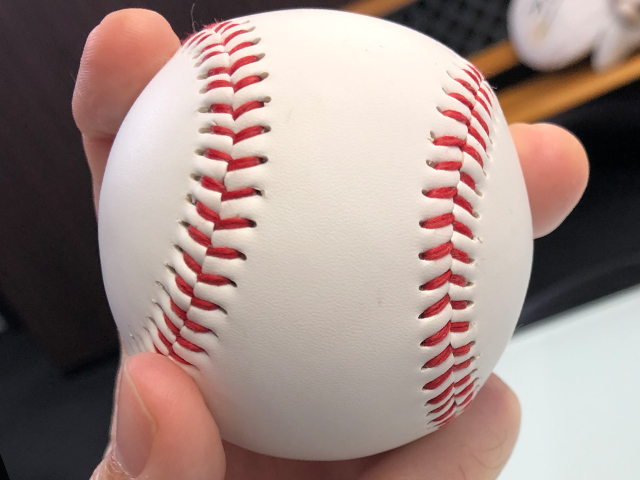
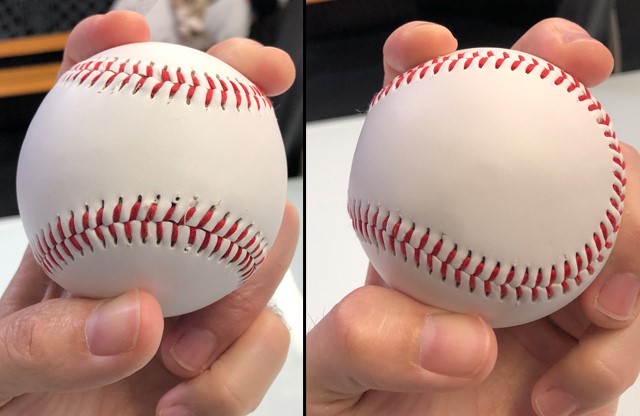
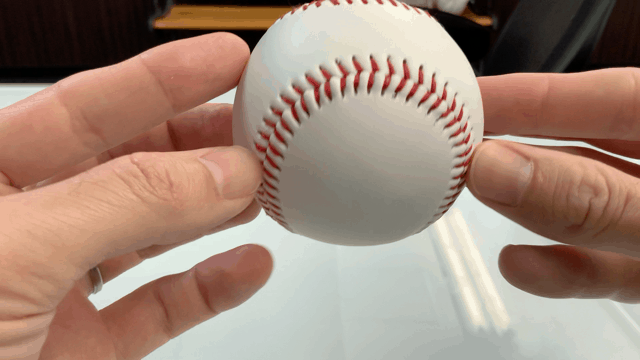

 We brave fastballs from the world’s fastest (and most terrifying) pitching machine
We brave fastballs from the world’s fastest (and most terrifying) pitching machine Japanese baseball player shows us the craziest batting warmup we’ve ever seen 【Video】
Japanese baseball player shows us the craziest batting warmup we’ve ever seen 【Video】 Japanese Lego genius rigs up a working machine gun made of plastic blocks【Video】
Japanese Lego genius rigs up a working machine gun made of plastic blocks【Video】 Beautiful Japanese bamboo speakers let you to listen to music without using any extra electricity
Beautiful Japanese bamboo speakers let you to listen to music without using any extra electricity Slip into a new, more comfortable normal with Aoki Holdings’ Pajama Suit
Slip into a new, more comfortable normal with Aoki Holdings’ Pajama Suit Foreigner’s request for help in Tokyo makes us sad for the state of society
Foreigner’s request for help in Tokyo makes us sad for the state of society Red light district sushi restaurant in Tokyo shows us just how wrong we were about it
Red light district sushi restaurant in Tokyo shows us just how wrong we were about it Japanese city loses residents’ personal data, which was on paper being transported on a windy day
Japanese city loses residents’ personal data, which was on paper being transported on a windy day Sandwiches fit for a sumo served up in Osaka【Taste Test】
Sandwiches fit for a sumo served up in Osaka【Taste Test】 Historical figures get manga makeovers from artists of Spy x Family, My Hero Academia and more
Historical figures get manga makeovers from artists of Spy x Family, My Hero Academia and more Akihabara pop-up shop sells goods made by Japanese prison inmates
Akihabara pop-up shop sells goods made by Japanese prison inmates Japanese company starts project to restore Nakagin Capsules to capsule hotel
Japanese company starts project to restore Nakagin Capsules to capsule hotel Anime girl English teacher Ellen-sensei becomes VTuber/VVTUber and NFT
Anime girl English teacher Ellen-sensei becomes VTuber/VVTUber and NFT Japan’s massive matcha parfait weighs 6 kilos, contains hidden surprises for anyone who eats it
Japan’s massive matcha parfait weighs 6 kilos, contains hidden surprises for anyone who eats it Ghibli Park now selling “Grilled Frogs” from food cart in Valley of Witches
Ghibli Park now selling “Grilled Frogs” from food cart in Valley of Witches McDonald’s new Happy Meals offer up cute and practical Sanrio lifestyle goods
McDonald’s new Happy Meals offer up cute and practical Sanrio lifestyle goods Japanese ramen restaurants under pressure from new yen banknotes
Japanese ramen restaurants under pressure from new yen banknotes All-you-can-drink Starbucks and amazing views part of Tokyo’s new 170 meter-high sky lounge
All-you-can-drink Starbucks and amazing views part of Tokyo’s new 170 meter-high sky lounge French Fries Bread in Tokyo’s Shibuya becomes a hit on social media
French Fries Bread in Tokyo’s Shibuya becomes a hit on social media Studio Ghibli releases new action figures featuring Nausicaä of the Valley of the Wind characters
Studio Ghibli releases new action figures featuring Nausicaä of the Valley of the Wind characters New private rooms on Tokaido Shinkansen change the way we travel from Tokyo to Kyoto
New private rooms on Tokaido Shinkansen change the way we travel from Tokyo to Kyoto Studio Ghibli glasses cases let anime characters keep an eye on your spectacles
Studio Ghibli glasses cases let anime characters keep an eye on your spectacles Tokyo Tsukiji fish market site to be redeveloped with 50,000-seat stadium, hotel, shopping center
Tokyo Tsukiji fish market site to be redeveloped with 50,000-seat stadium, hotel, shopping center Beautiful Ghibli sealing wax kits let you create accessories and elegant letter decorations【Pics】
Beautiful Ghibli sealing wax kits let you create accessories and elegant letter decorations【Pics】 Studio Ghibli releases Kiki’s Delivery Service chocolate cake pouches in Japan
Studio Ghibli releases Kiki’s Delivery Service chocolate cake pouches in Japan New definition of “Japanese whiskey” goes into effect to prevent fakes from fooling overseas buyers
New definition of “Japanese whiskey” goes into effect to prevent fakes from fooling overseas buyers Our Japanese reporter visits Costco in the U.S., finds super American and very Japanese things
Our Japanese reporter visits Costco in the U.S., finds super American and very Japanese things Studio Ghibli unveils Mother’s Day gift set that captures the love in My Neighbour Totoro
Studio Ghibli unveils Mother’s Day gift set that captures the love in My Neighbour Totoro New Japanese KitKat flavour stars Sanrio characters, including Hello Kitty
New Japanese KitKat flavour stars Sanrio characters, including Hello Kitty More foreign tourists than ever before in history visited Japan last month
More foreign tourists than ever before in history visited Japan last month New Pokémon cakes let you eat your way through Pikachu and all the Eevee evolutions
New Pokémon cakes let you eat your way through Pikachu and all the Eevee evolutions Sales of Japan’s most convenient train ticket/shopping payment cards suspended indefinitely
Sales of Japan’s most convenient train ticket/shopping payment cards suspended indefinitely Sold-out Studio Ghibli desktop humidifiers are back so Totoro can help you through the dry season
Sold-out Studio Ghibli desktop humidifiers are back so Totoro can help you through the dry season Japanese government to make first change to romanization spelling rules since the 1950s
Japanese government to make first change to romanization spelling rules since the 1950s Ghibli founders Toshio Suzuki and Hayao Miyazaki contribute to Japanese whisky Totoro label design
Ghibli founders Toshio Suzuki and Hayao Miyazaki contribute to Japanese whisky Totoro label design Doraemon found buried at sea as scene from 1993 anime becomes real life【Photos】
Doraemon found buried at sea as scene from 1993 anime becomes real life【Photos】 Tokyo’s most famous Starbucks is closed
Tokyo’s most famous Starbucks is closed One Piece characters’ nationalities revealed, but fans have mixed opinions
One Piece characters’ nationalities revealed, but fans have mixed opinions We asked a Uniqlo employee what four things we should buy and their suggestions didn’t disappoint
We asked a Uniqlo employee what four things we should buy and their suggestions didn’t disappoint Princesses, fruits, and blacksmiths: Study reveals the 30 most unusual family names in Japan
Princesses, fruits, and blacksmiths: Study reveals the 30 most unusual family names in Japan Japan’s prince of tennis gets his own Prince of Tennis manga portrait
Japan’s prince of tennis gets his own Prince of Tennis manga portrait Free Zen-like mobile game about broken pots contains the wisdom of ancient Japanese philosophy
Free Zen-like mobile game about broken pots contains the wisdom of ancient Japanese philosophy TRANSFORM! And write while you’re at it, too — with these cool shape-shifting Transformers pens!
TRANSFORM! And write while you’re at it, too — with these cool shape-shifting Transformers pens! Sadako vs Kayako take to the field as they open baseball game in Hokkaido
Sadako vs Kayako take to the field as they open baseball game in Hokkaido Giving basketball a bit of yin-yang: Chinese martial artist’s amazing performance 【Video】
Giving basketball a bit of yin-yang: Chinese martial artist’s amazing performance 【Video】 LEGO “ball contraption” at Japan Brickfest is hypnotizing in its mechanical efficiency 【Video】
LEGO “ball contraption” at Japan Brickfest is hypnotizing in its mechanical efficiency 【Video】 Japanese grandpa swings golf club so hard it sets field alight, onlookers yell “fire” not “fore”
Japanese grandpa swings golf club so hard it sets field alight, onlookers yell “fire” not “fore” Giant pilotable robot appears at Japan Mobility Show, stirs our mecha-loving souls【Pics, vids】
Giant pilotable robot appears at Japan Mobility Show, stirs our mecha-loving souls【Pics, vids】 Super-expensive capsule toys – Trying out Japan’s Premium Gachapon machine【Photos】
Super-expensive capsule toys – Trying out Japan’s Premium Gachapon machine【Photos】 Travis Japan members compete with the best dancers in Japan at Red Bull’s national dance finals
Travis Japan members compete with the best dancers in Japan at Red Bull’s national dance finals NPB player sparks controversy by not letting a retiring pitcher strike him out
NPB player sparks controversy by not letting a retiring pitcher strike him out Modern samurai demonstrates that he could make it in Major League Baseball【Video】
Modern samurai demonstrates that he could make it in Major League Baseball【Video】 Baffling building in Japan looks like a graphics glitch in real life
Baffling building in Japan looks like a graphics glitch in real life This Do Re Mi Day, remember to give your child the gift of perfect pitch
This Do Re Mi Day, remember to give your child the gift of perfect pitch
Leave a Reply